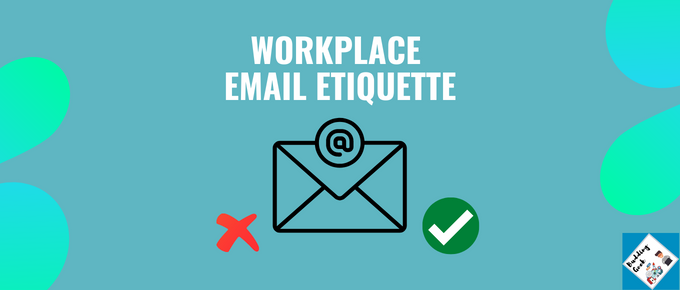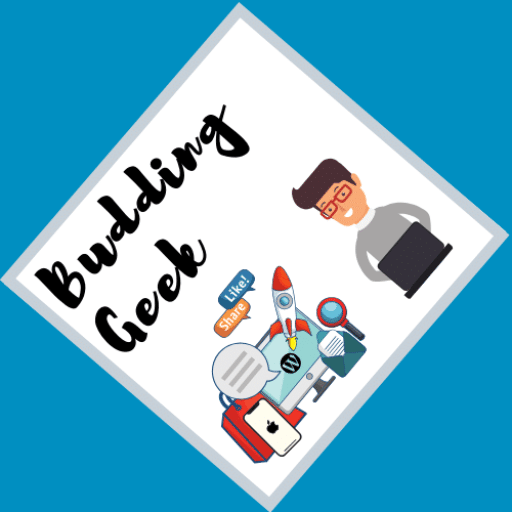In today’s fast-paced and tech driven work environment, email has become the primary means of communication across all organizations, whether big or small. With this level of reliance on email, it’s become more important than ever to ensure that our workplace e-mails are refined, professional, and effective in conveying our message. So, whether you’re communicating with your coworkers, clients, or superiors, following basic email etiquette can make all the difference in leaving a positive and lasting professional image. In this guide, I’ll walk you through the key elements of email etiquette in the workplace and will also share tips and tricks for crafting emails that are both effective and professional.
What is Email Etiquette? Explained
Email etiquette is nothing but complying with a set of unwritten protocols for sending emails at workplace that are polite and professional. In a nutshell, email etiquette dictates how exactly emails should be structured, written, and sent in order to convey the intended message effectively and professionally.
For example, writing an email in All UPPERCASE is equivalent to warning or scolding someone. Sending emails to seniors at your workplace in such a format is bad email etiquette. It is therefore very important to be consciously aware of the tone and formatting of your emails at your workplace. Your emails have to be polite, clear in conveying the intended message, and yet professional at the same time.
10 most important workplace e-mail etiquette:
Now, without any further delay, let’s now discuss the 10 most important workplace email etiquette, following which will make you a true professional…
1. Use a clear and descriptive subject line.
The email subject line is the first thing that your recipients see in their inbox. Make sure you don’t confuse them with a poor one. Otherwise also, you tell me – What’s the purpose of sending emails at workplace if your recipients have to guess the subject matter of your email? When your recipients can’t comprehend the meaning and subject matter of your emails, it causes unintentional delay in taking prompt action on their parts.
It is therefore very important to use a clear and descriptive subject line for your emails. Here are a few tips on writing clear and meaningful subject lines:
- Identify the core objective of your message
- Once the objective is identified, draft a subject line of not more than 10 words
For example, if I want to alert my team to prepare for an upcoming conference on 4th March 2023, then my email subject lines could be:
- Preparing for the Upcoming Conference: 4th March 2023
- Countdown to the 4th March Conference: Get Ready Now
- 4th March Conference: Final Preparations Needed
Try not to exceed 10 words for the subject line so that your colleagues can read it easily even if they are using a mobile device.
2. Address the recipient by their proper title and last name.
Another important workplace email etiquette is to know how to address your recipients correctly. It shows respect and professionalism towards the recipients. Using proper titles and last names also helps to establish an accurate identification of the recipient, which could be beneficial in large organizations where multiple people may have the same first names.
You may use titles like – Mr, Ms, Mrs, Dr, etc., depending on the identity of your recipient.
- Mr — Can be used to address all adult men
- Ms — Can be used for all women
- Mrs — for married, divorced, or widowed women
- Dr — for a doctor, whether they have a medical or doctorate degree
Make sure the title you use is preceded with a professional greeting, which makes it our next tip in this post.
3. Use a professional greeting and sign-off.
A professional greeting and sign-off in an email is a way to begin and end your email in a polite and respectful manner. This is important because it sets the tone for the entire email and reflects how professional you are! It’s a very common and important email etiquette that you can’t afford to ignore at your workplace.
Examples of phrases you can use as professional email greetings:
Dear, Hi / Hello, Sir, Mam, Good morning / afternoon / evening
Examples of phrases you can use as professional email signoffs:
Best Regards, Warm Regards, Thank You, Sincerely
To learn more about how and when to use professional signoffs for email, I encourage you to visit my post on How to end a business email? Best closing tips with examples!
4. Avoid using all caps or excessive exclamation points.
Writing an email at your workplace using ALL CAPS is considered poor email etiquette because it is most often perceived as equivalent to shouting, aggression or ranting. This can make your colleagues feel that you are rude or aggressive.
Similarly, using too many exclamation marks in an email can also be considered unprofessional and can make the email sender seem overexcited, informal, or even insincere. Moreover, overusing exclamation marks can distract your colleagues from the main content of your email and could make it appear that you are trying too hard to emphasize your point.
5. Keep emails concise and to the point.
Keeping your emails concise and to the point is good email etiquette because it helps to ensure that the message is clear, efficient, and respectful of the recipient’s time.
When emails are concise and to the point, they are more likely to be read and acted upon quickly. Further, your recipients don’t have to spend much time reading or re-reading it in search of relevant information. This shows how respectful you are in saving their precious time. Concise emails are also less likely to be overlooked or forgotten, as they are easy to read and understand.
Wondering how to write such short and clear emails? Here are a few tips that could be helpful –
- Start with a clear subject line: As already shared in point no. 1 of this post, the subject line should summarize the main topic of the email in a brief and concise manner.
- Get straight to the point: Next, start your email with the most important and relevant information. Avoid writing lengthy background related information.
- Use bullet points or numbered lists: These can help to break down information into smaller, more manageable chunks, making it easier for the recipient to understand your email quickly.
- Be specific and avoid ambiguity: Use clear and specific language to avoid confusion and ensure that the recipient understands the message. Use simple words and avoid using any technical jargon.
- Edit for conciseness: Read through your email before sending it to eliminate any repeated or irrelevant information.
- Stick to a word count: Aim for an email length of no more than a few paragraphs or a couple of hundred words.
6. Use proper grammar, spelling, and punctuation.
Usage of the right grammar, spelling, and punctuation is imperative for all professional communications happening at your workplace. Emails are definitely not an exception! Your colleagues and superiors are more likely to respond positively to emails that are well-written and easy to comprehend.
Good writing skills also demonstrate that you are professional, competent, and take your job seriously. On the flipside, sending emails that are grammatically incorrect, incoherent, and full of spelling mistakes can give an impression that you are unprofessional, careless or simply uninterested in the job.
If you aren’t from a native english speaking country, or in case you need some level of assistance on how to write grammatically correct sentences, then try taking help of various online tools. Grammarly is my personal favorite! You could also try Microsoft Editor which is free and readily available as a Chrome and Edge browser extension.
You might also like to read – 6 Free Online Proofreading Tools For Perfect Writing
7. Avoid sending emails at odd hours, such as late at night or very early in the morning.
Sending emails at odd hours (beyond your regular office hours) is generally considered a bad email etiquette for the following reasons:
- They are outright intrusive: Late-night or early morning emails are seen as intrusive and disruptive. People may feel pressure to respond immediately, even if they are sleeping or otherwise occupied with their personal work. Isn’t it unprofessional?
- Lack of respect for personal time: Sending emails at odd hours can make it seem like you expect your colleagues or superiors to be available for work outside of normal business hours. This can be disrespectful of their personal time and well-being.
8. Always use a professional tone and avoid being too casual or confrontational.
It is important to avoid using words or a tone that is too casual for workplace emails. It can come across as unprofessional and may even harm your reputation. It’s a poor etiquette.
Here is an example of a casual email that should be avoided in a workplace setting:
Subject: Hey, let’s catch up tomorrow 😊
Hey [Recipient’s Name],
What’s up? How’s it going? I was just thinking about you and thought I’d reach out to catch up. Do you have any plans for coffee tomorrow? I’d love to grab a cup with you and simultaneously discuss our official project.
Let me know if you’re free.
Cheers,
[Your Name]
The email example shown above is outright objectionable in a professional workplace atmosphere. So, what went wrong? The tone of the email and the smiley used in the subject line make it too casual for the recipient to take it seriously. Isn’t it? What else seems wrong? Please share your observations in the comments below.
9. Respond promptly to emails, but avoid CC’ing unnecessary people.
Promptly replying to workplace emails is a good email etiquette. Here is why:
- Shows respect: Responding to emails promptly, or as soon as you can, shows that you respect the sender’s time and value their communication.
- Builds trust: It also helps build trust and strengthens your professional image. When your colleagues acknowledge that you respond promptly to their emails, they are more likely to rely on you in the future and count on you to handle important work-related projects and tasks.
Another important thing to keep in mind while replying to emails is to ensure that you don’t end up putting unnecessary people in loop. Learn more about CC and BCC in an email: Explained with concepts and examples.
10. Make sure to attach any necessary files or documents before sending the email.
Lastly, make sure that you attach the required files or documents before sending an email. An email that falls short of expected attachments can make you look unprofessional and callow. This also saves everyone’s time and increases efficiency, as your recipients do not have to request additional information or clarification.
PPT on Workplace Email Etiquette
And here’s a PPT that I’ve created to help you understand and share the knowledge in a presentable way:
Your thoughts?
I hope you liked this blog post. If yes, I would appreciate it if you could spare a moment to comment, like, and share it across. Also, do let me know what are your thoughts on this post? What email etiquette do you follow the most at your workplace? Looking forward to engaging with you in the comments below.


I enjoyed reading this article. Almost everyone in my office needs to work on tip no. 7 and 9. They email at odd working hours and keep everyone in cc. Lol